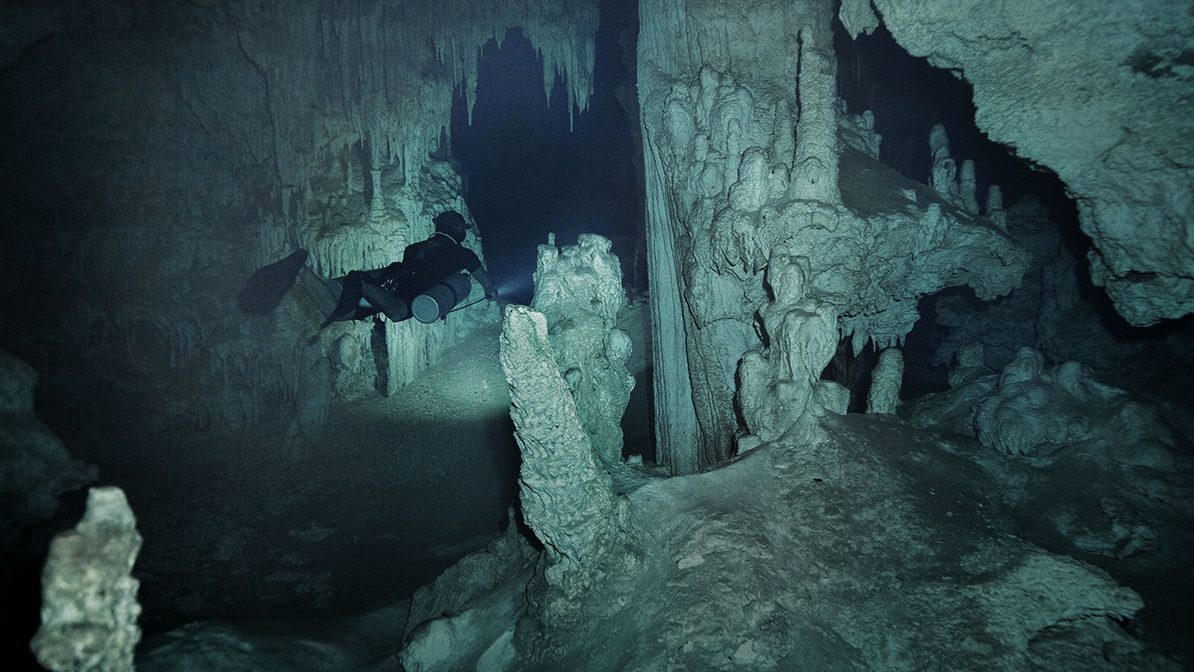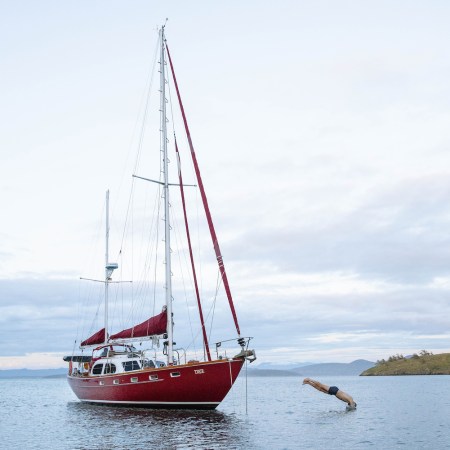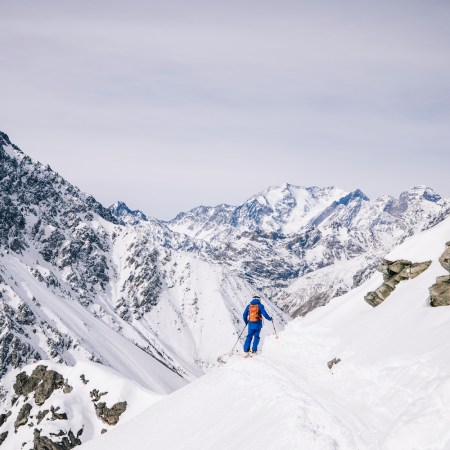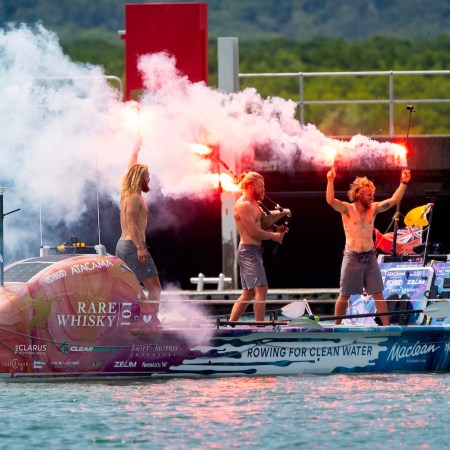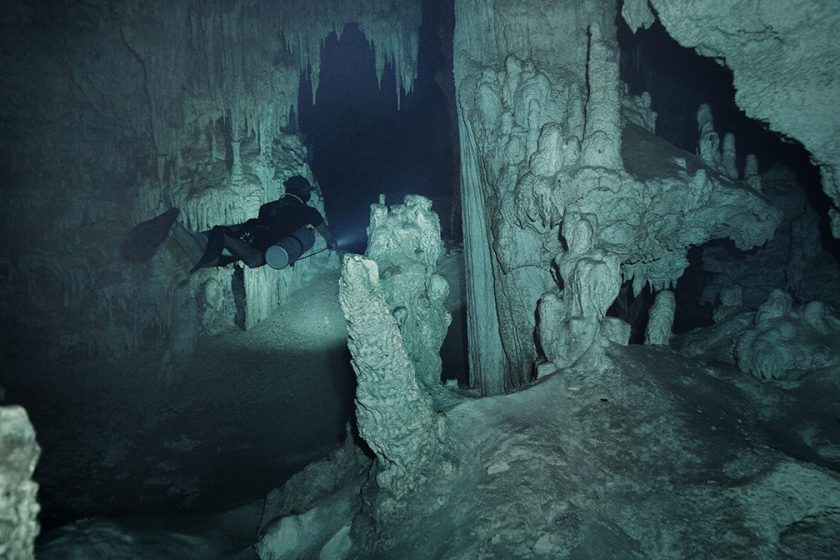
You could call this real-life version of Thunderball (save for the nuclear bombs or bad buys armed with harpoons).
Danish photographer Klaus Thymann joined two divers, who were mapping a new cave system called Mul Tun, in Mexico’s Yucatan Peninsula. First discovered in late 2015, the series of caves are part of one of the world’s highest concentrations of cenotes (or sinkholes) that lead to underwater cave systems.
With divers Luis Leal and Alessandro Reato, Thymann hiked for an hour and a half into the Mexican jungle to find the hidden cave-like entrance to the cenote. “Its discovery was made when a local Mayan was walking through the jungle and heard the calls of a Motmot bird,” explained the photographer. “Known to nest in caves, the bird led him to the cave opening of Mul Tun.”
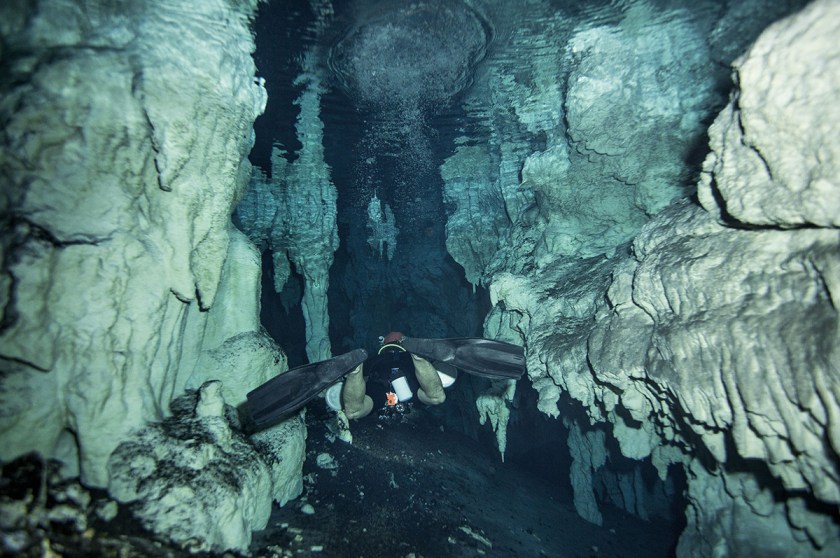
At the entrance, Thymann and the divers checked their equipment, crawled down a slope into a shallow pool, swam through a small gap and the whole system opened up.
Said Thymann about the underwater cave adventure:
“There was no natural light, and the caves are between 10 and 23 feet wide. As we swam through the passages we had to ensure we didn’t hit the stalactites that have taken centuries to form or to disturb the fine sediment on the cave floor. There’s very little current, or flow, in the caves and if you ‘silt-up’ you’re swimming blind, and it can take a day to clear. Smaller gaps meant we had to unclip our air tanks, which are mounted on our sides rather than on our backs for better maneuverability, and push them through in front of us.”
Throughout the trio’s exploration, one of the divers was mapping the cave using lines, which not only marked the discovery, but also their route back. The explorers had to be careful never to lose sight of the line, as it ensured that they wouldn’t get lost if visibility were compromised.
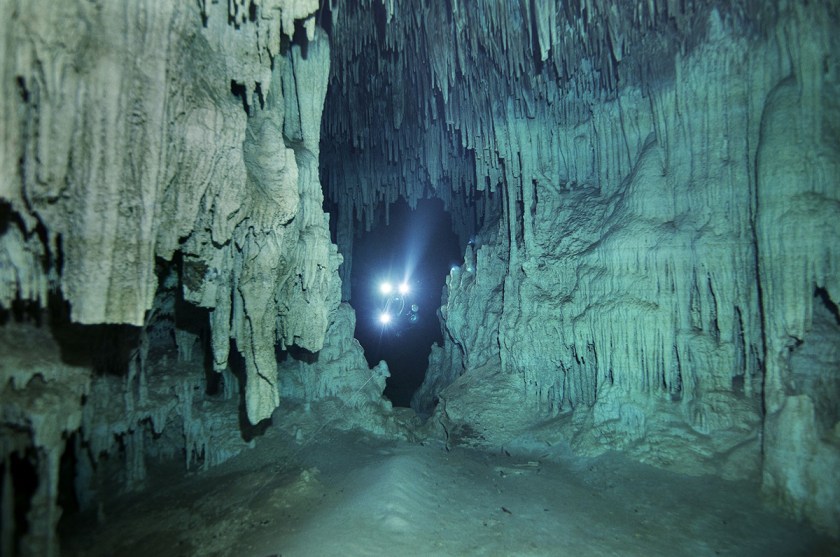
“Naturally, there’s a particular intensity when cave-diving that you don’t get when diving in open water,” added Thymann, “and there’s definitely an adrenaline rush when you go into somewhere that hasn’t been explored before.”
After a while he and the divers began to flow in sync with one another and could really take in the surroundings. “It is an incredible feeling to squeeze through a small passage to find a cave open up before you,” said the photographer, “and I am always struck by the beauty of the cave—the stalactites, the water so clear and so still that the fine dust on the ceiling disturbed by the bubbles from your regulator drift down like snowflakes.”
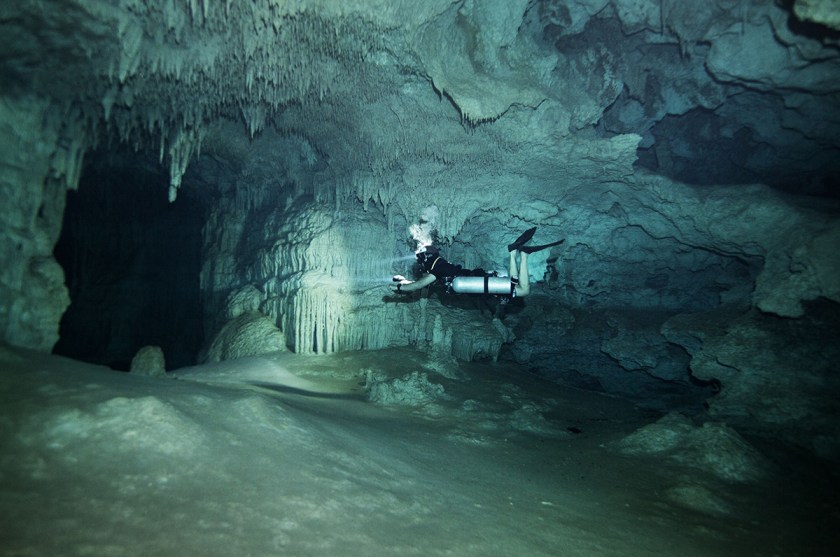
The photographer concludes:
“There are not many places in the world that haven’t been explored. Though exploration today is still about achieving incredible feats and surviving extreme environments, it often involves following in the footsteps of others. Yet these cave systems are still being discovered. It’s an incredibly special experience to be floating through these spaces that you know have not been seen for thousands of years, where you can stumble upon the remains of ancient campfires from before the caves flooded.”
—Rex Features
For additional photos from Thymann’s adventure, scroll below. At the bottom, watch a short video from BlueWorldTV, showing you what it’s like to dive into a cenote cave in Mexico’s Yucatan Peninsula. (It’s not the same one; this film was shot in 2014).
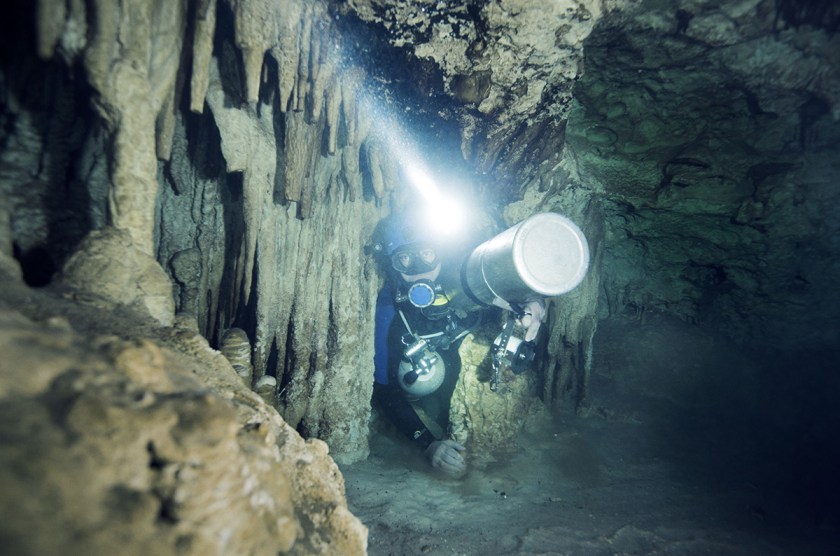
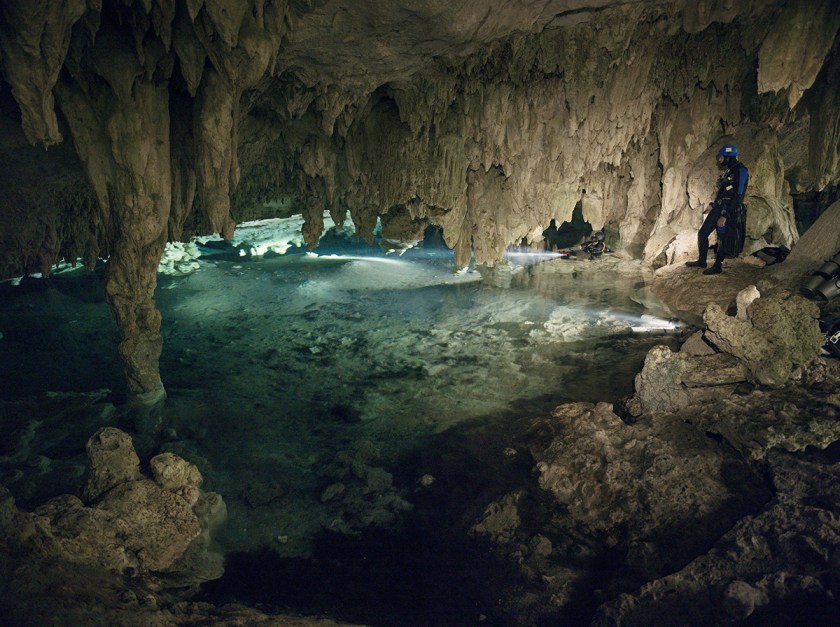
This article appeared in an InsideHook newsletter. Sign up for free to get more on travel, wellness, style, drinking, and culture.
